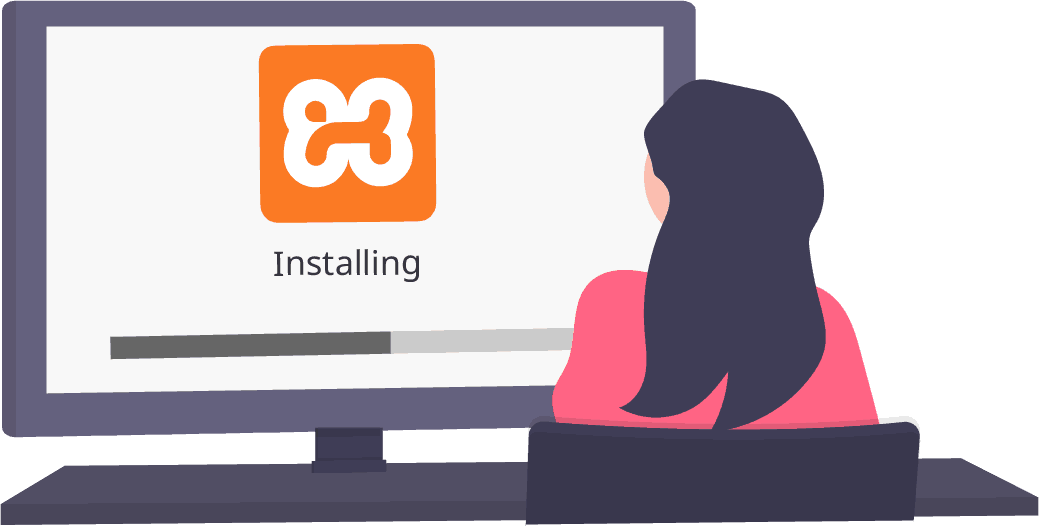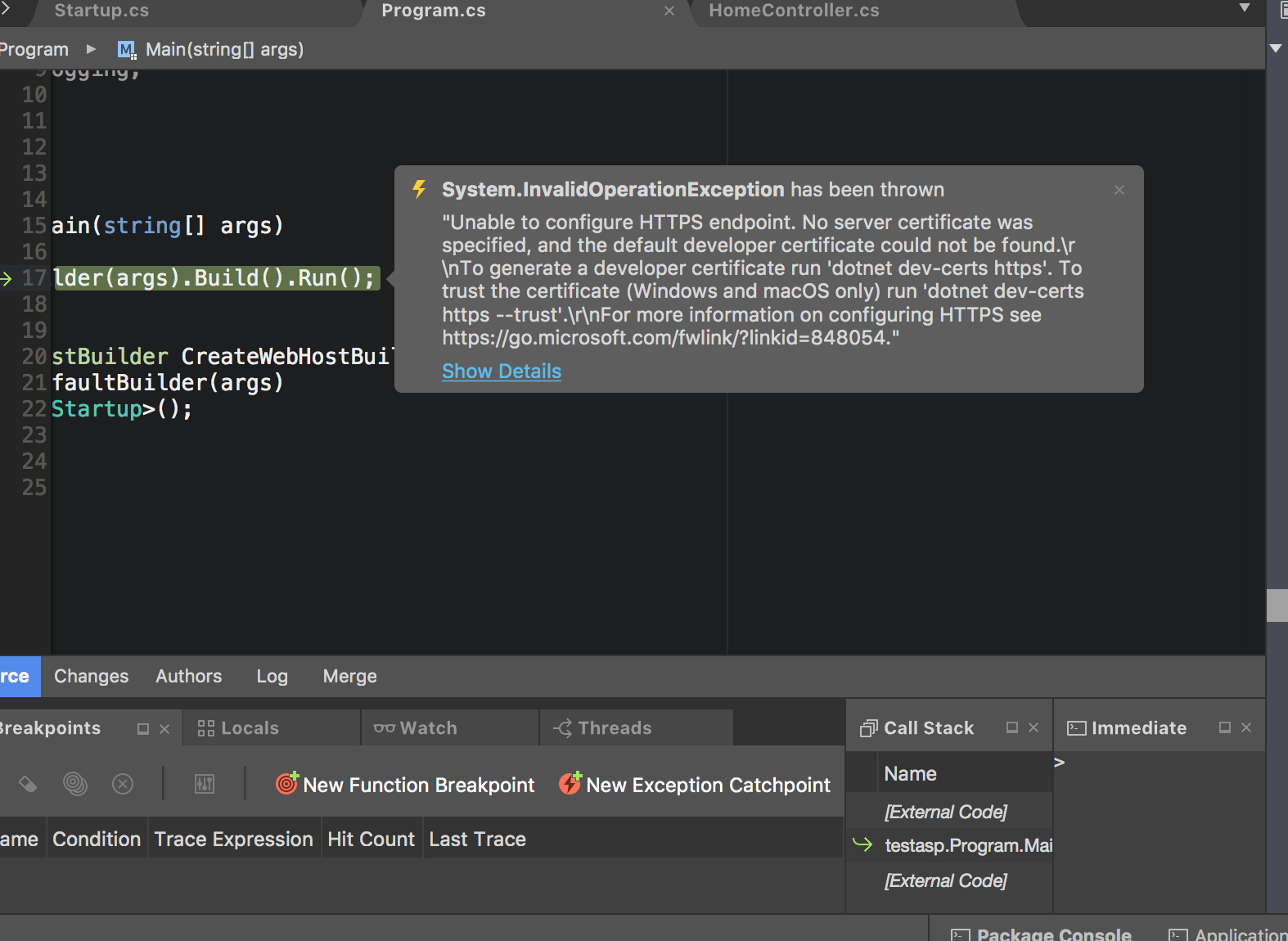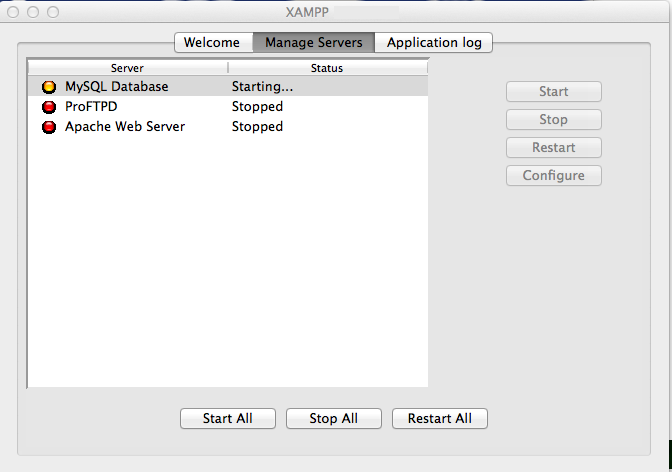These packages contain Moodle plus all the other software needed to make it run on a Mac: Apache, MySQL and PHP. They are built using MAMP. See the documentation Installation Package for OS X for details. The packages are built and maintained by Ralf Krause. I am running MacOS Mojave 10.14 with XAMPP 7.2.5. Earlier today, I tried to start up XAMPP after a crash/restart. XAMPP Manager was unable to start the MYSQL Server. Apache did start correctly. Figuring there was a potential corruption, I used my Time Machine to restore my XAMPP folder (to a 36-hour old file) in Applications. Launch XAMPP; Start the services; In this tutorial, I'll be using my Mac running macOS 10.14 ('Mojave'), but the steps are the same for the other versions of Mac OSX and macOS 10.x (update: I've tested this on Catalina and it works there too). Go to Apache Friends and download the correct version of XAMPP.
- Download Xampp Windows
- Xampp Wordpress Mac
- Xampp For Mac Os X
- Download For Mac Mojave Free
- Install Xampp On Mac
Once you’ve made a backup of your Mac and are ready, follow the steps below to download and install macOS 10.14 Mojave. Verify Compatibility for Mojave. In order to upgrade your Mac operating system (macOS), you must have a compatible Mac computer. The following Macs are compatible and can upgrade to macOS Mojave. Download XAMPP for Mac 7.4.10 for Mac. Fast downloads of the latest free software!
I noticed after updating to MacOS Mojave that MySQL would not start for some reason.
After opening my .err document (usually called YOURCOMPUTERNAME.err), it will show you all of the errors that MySQL is outputting to show you what is going wrong.
Mine had these lines:
2018-12-17 18:01:49 4429411776 [Note] InnoDB: The InnoDB memory heap is disabled
2018-12-17 18:01:49 4429411776 [Note] InnoDB: Mutexes and rw_locks use GCC atomic builtins
2018-12-17 18:01:49 4429411776 [Note] InnoDB: Memory barrier is not used
2018-12-17 18:01:49 4429411776 [Note] InnoDB: Compressed tables use zlib 1.2.8
2018-12-17 18:01:49 4429411776 [Note] InnoDB: Using CPU crc32 instructions
2018-12-17 18:01:49 4429411776 [Note] InnoDB: Initializing buffer pool, size = 16.0M
2018-12-17 18:01:49 4429411776 [Note] InnoDB: Completed initialization of buffer pool
2018-12-17 18:01:49 4429411776 [Note] InnoDB: Highest supported file format is Barracuda.
2018-12-17 18:01:49 4429411776 [Note] InnoDB: 128 rollback segment(s) are active.
2018-12-17 18:01:49 4429411776 [Note] InnoDB: Waiting for purge to start
2018-12-17 18:01:49 4429411776 [Note] InnoDB: Percona XtraDB (http://www.percona.com) 5.6.26-74.0 started; log sequence number 118715806
2018-12-17 18:01:49 123145544376320 [Note] InnoDB: Dumping buffer pool(s) not yet started
2018-12-17 18:01:49 4429411776 [Note] Plugin ‘FEEDBACK’ is disabled.
2018-12-17 18:01:49 4429411776 [Note] Recovering after a crash using tc.log
2018-12-17 18:01:49 4429411776 [ERROR] Bad magic header in tc log
2018-12-17 18:01:49 4429411776 [ERROR] Crash recovery failed. Either correct the problem (if it’s, for example, out of memory error) and restart, or delete tc log and start mysqld with –tc-heuristic-recover={commit|rollback}
2018-12-17 18:01:49 4429411776 [ERROR] Can’t init tc log
2018-12-17 18:01:49 4429411776 [ERROR] Aborting

If you’ll see at the bottom, the first error says “Bad magic header in tc log”.
I found this post, where a user had the exact same error as me and the same issue.
I tried his method by deleting the .tc.log file located in /xampp/xamppfiles/var/mysql/tc.log, and tried firing up MySQL.
Viola! Started up just fine.
Please let me know in the comments below if this helped you! I was very happy not to lose my old database and files from my previous XAMPP installation. I guess it’s time I should back it all up…
Get your Local Web Development Environment Up & Running on macOS Mojave 10.14
With Apples’ new macOS Mojave 10.14 available for download, here is how to get the AMP stack up and running on the new macOS. This tutorialwill go through the process of getting Apache, MySQL, PHP (or otherwise known as the ‘AMP’ stack)and phpMyAdmin running on the new macOS Mojave.
macOS Catalina 10.5 guide here.
This tutorial sets up the AMP stack in more of a traditional way using the loaded Apache and PHP and downloading MySQL and phpMyAdmin.
Setting Stuff Up
Apache/WebSharing
Web serving is built into Mojave with Apache app, it is installed ready to be fired up.
This needs to be done in the Terminal which is found in the OS filing system at /Applications/Utilities/Terminal
Download Xampp Windows
For those not familiar with the Terminal, it really isn’t as intimidating as you may think, once launched you are faced with a command prompt waiting for your commands – just type/paste in a command and hit enter, some commands give you no response – it just means the command is done, other commands give you feedback.
Using the prefix of sudo is required for commands that have their applications protected in specific folders – when using sudo you will need to confirm with your admin password or iCloud password if set up that way…. let’s get to it …
to start Apache web sharing
to stop it
to restart it
To find the Apache version
The Apache version that comes in macOS Mojave is Apache/2.4.34
After starting Apache – test to see if the webserver is working in the browser – http://localhost – you should see the “It Works!” text.
If you don’t get the localhost test, you can try troubleshooting Apache to see if there is anything wrong in its config file by running
This will give you an indication of what might be wrong.
Document Root
Document root is the location where the files are shared from the file system and is similar to the traditional names of ‘public_html‘ and ‘htdocs‘, macOS has historically had 2 web roots one at a system level and one at a user level – you can set both up or just run with one, the user level one allows multiple accounts to have their own web root whilst the system one is global for all users. It seems there is less effort from Apple in continuing with the user level one but it still can be set up with a couple of extra tweaks in configuration files. It is easier to use the user level one as you don’t have to keep on authenticating as an admin user.
System Level Web Root
– the default system document root is still found at –
http://localhost/
The files are shared in the filing system at –
User Level Root
The other web root directory which is missing by default is the ‘~/Sites’ folder in the User account. This takes a bit longer to set up but some users are very accustomed to using it.
You need to make a “Sites” folder at the root level of your account and then it will work. Once you make the Sites folder you will notice that it has a unique icon which is a throwback from a few versions older. Make that folder before you set up the user configuration file described next.
You have to make a few additional tweaks to get the ~/Sites folder back up and running.
Add a “username.conf” filed under:
If you don’t already have one (very likely), then create one named by the short username of the account with the suffix .conf, its location and permissions/ownership is best tackled by using the Terminal, the text editor ‘nano‘ would be the best tool to deal with this.
If you would rather edit config files in a text editor as an app I would suggest the free BBEdit which allows you to open hidden system files.
Launch Terminal, (Applications/Utilities), and follow the commands below, first one gets you to the right spot, 2nd one opens the text editor on the command line (swap ‘username‘ with your account’s shortname, if you don’t know your account shortname type ‘whoami‘ the Terminal prompt):
Then add the content below swapping in your ‘username’ in the code below:
Permissions on the file should be:
If not you need to change…
Open the main httpd.conf and allow some modules:
And make sure these modules are uncommented (the first 2 should already be on a clean install):
While you have this file open also to get php running, uncomment the below … (Mentioned also in the PHP part of the article).
And also uncomment this configuration file also in httpd.conf – which allows user home directories.
Save all your changes (Control + O in nano)
Then open another Apache config file and uncomment another file:
And uncomment:
Save all your changes (Control + O in nano)
Restart Apache for the new file to be read:

Then this user level document root will be viewable at:
Xampp Wordpress Mac
http://localhost/~username/
You should only see a directory tree like structure if the folder is empty.
Override .htaccess and allow URL Rewrites
If you are going to use the web serving document root at /Library/WebServer/Documents it is a good idea to allow any .htaccess files used to override the default settings – this can be accomplished by editing the httpd.conf file at line 217 and setting the AllowOverride to All and then restart Apache. This is already taken care of at the Sites level webroot by following the previous step.
Also while here allow URL rewrites so your permalinks look clean, not ugly.
Uncomment in httpd.conf – should be uncommented on a clean install.
PHP
PHP 7.1.9 is loaded in this version of macOS Mojave and needs to be turned on by uncommenting a line in the httpd.conf file.
Use “control” + “w” to search within nano and search for ‘php’ this will land you on the right line then uncomment the line (remove the #):
Write out and Save using the nano shortcut keys at the bottom ‘control o’ and ‘control x’
Reload Apache to kick in
To see and test PHP, create a file name it “phpinfo.php” and file it in your document root with the contents below, then view it in a browser.
MySQL
MySQL doesn’t come pre-loaded with macOS Mojave and needs to be dowloaded from the MySQL site.
The latest version of MySQL 8.0.12 does work with the public release of macOS.
Use the macOS 10.13 (x86, 64-bit), DMG Archive version (works on macOS Mojave).
If you are upgrading from a previous macOS and have an older MySQL version you do not have to update it.
Also if you have a clean install and want the earlier MySQL version 5.7, you can still get this from the MySQL site – from the ‘Looking for previous GA versions’ link. (MySQL 8 is relatively new and not in many production set ups)
One thing with MySQL upgrades, always take a data dump of your database in case things go south and before you upgrade to macOS Mojave make sure your MySQL Server is not running.
When downloading you don’t have to sign up, look for » No thanks, just take me to the downloads! – go straight to the download mirrors and download the software from a mirror which is closest to you.
Once downloaded open the .dmg and run the installer.
During the MySQL process you are prompted to choose between strong and legacy password encryptions, since version 8 is entirely new, some software like phpMyAdmin can’t connect with the newer encryptions – so if you are going to use a GUI wrapper like phpMyadmin I suggest you stick to legacy.
Then add a password for the MySQL root user.
Add Mysql to your path
After installation, in order to use MySQL commands without typing the full path to the commands you need to add the mysql directory to your shell path, (optional step) this is done in your “.bash_profile” file in your home directory, if you don’t have that file just create it using vi or nano:
The first command brings you to your home directory and opens the .bash_profile file or creates a new one if it doesn’t exist, then add in the line above which adds the MySQL binary path to commands that you can run. Exit the file with type “control + x” and when prompted to save the change by typing “y”. The last thing to do here is to reload the shell for the above to work straight away.
Change the MySQL root password
(This section is left in for reference – in previous macOS MySQL packages the password set during the installation process would fail – hence the info below. This newer version, however, seems to work).
Note that this is not the same as the root or admin password of macOS – this is a unique password for the MySQL root user.
Stop MySQL
Start it in safe mode:
This will be an ongoing command until the process is finished so open another shell/terminal window, and log in without a password as root:
Change the lowercase ‘MyNewPass’ to what you want – and keep the single quotes.
Start MySQL
Starting MySQL
You can then start the MySQL server from the System Preferences or via the command line.
The new MySQL system preference also has the uninstall feature – useful if you’ve installed it with a security encryption that’s not working for you and want to try the other one. You can also see the paths to the config and data sources of MySQL in the configuration tab.
Or to Command line start MySQL.
To find the MySQL version from the terminal, type at the prompt:
This also puts you into a shell interactive dialogue with MySQL, type q to exit.
Fix the 2002 MySQL Socket error
Fix the looming 2002 socket error – which is linking where MySQL places the socket and where macOS thinks it should be, MySQL puts it in /tmp and macOS looks for it in /var/mysql the socket is a type of file that allows MySQL client/server communication.
phpMyAdmin
First fix the 2002 socket error if you haven’t done so from the MySQL section-
Download phpMyAdmin, the zip English package will suit a lot of users, then unzip it and move the folder with its contents into the document root level renaming folder to ‘phpmyadmin’.
Make the config folder

Change the permissions
Run the set up in the browser
http://localhost/~username/phpmyadmin/setup/ orhttp://localhost/phpmyadmin/setup/
You need to create a new localhost mysql server connection, click new server.
Switch to the Authentication tab and set the local MySQL root user and the password.
Add in the username “root” (maybe already populated, add in the password that you set up earlier for the MySQL root user set up, click on save and you are returned to the previous screen.
(This is not the macOS Admin or root password – it is the MySQL root user)
Now going to http://localhost/~username/phpmyadmin/ will now allow you to interact with your MySQL databases.
Permissions
To run a website with no permission issues it is best to set the web root and its contents to be writeable by all since it’s a local development it shouldn’t be a security issue.
Let’s say that you have a site in the User Sites folder at the following location ~/Sites/testsite you would set it to be writeable like so:
If you are concerned about security then instead of making it world writeable you can set the owner to be Apache _www but when working on files you would have to authenticate more as admin you are “not” the owner, you would do this like so:
This will set the contents recursively to be owned by the Apache user.
Xampp For Mac Os X
If you had the website stored at the System level Document root at say /Library/WebServer/Documents/testsite then it would have to be the latter:
Another more straightforward way to do this if you have a one user workstation is to change the Apache web user from _www to your account.
Download For Mac Mojave Free
That’s it! You now have the native AMP stack running on top of macOS Mojave.
Install Xampp On Mac
If you are a WordPress user and want a smooth lean local development environment – also worth checking out is Laravel Valet which runs on top of macOS – check out my Valet WordPress Guide on macOS.
